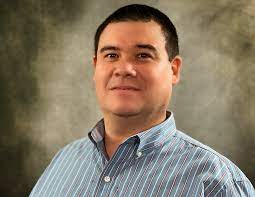Recently, the during a workshop meeting for the City of Palm Coast, City officials asked Emergency Operations Center Director Jonathan Lord to give a presentation on the changes to the climate in Flagler County. Director Lord sat down with us to explain his presentation in more detail.
Director Lord first explained that his presentation was irrelevant to the flooding, and it focused strictly on weather patterns for Flagler County, where it is today compared to where it was 25 years ago, general mitigation, and how the area can be more resilient for disasters.
Director Lord first explained a little bit about Flagler County, “Florida in general is low lying, though if you go towards, Ocala or Tallahassee, there are hills; but in general, all the coastal counties, Flagler County included, are generally low lying. This is not an official term but our growth management director calls it poorly drained piney flat lands. In general, we’re an area that historically, before we built homes and roads on it, flooded. So it’s always been a flood prone area.” Director Lord continued his explanation, “You can build out a flood prone area and elevate entire developments, which is what a lot of the new developments are doing.”
When it comes to rainfall, Director Lord had explained that because Flagler is a small area, we do not have any official National Weather Service data, like there is for Jacksonville or Daytona. But the EOC and the City of Palm Coast have been collecting data on rainfall in the area for decades. When going back over the data originally presented, Director Lord explained the difference between the 25 year average in rainfall, and the increased numbers when looking at the ten year average for the area. The 25 year average had the area in the range of 50-63 inches of rain per year, while the 10 year average had the area in the range of 57-67; a significant difference in amounts. Director Lord also explained the last few years and the lack of a dry season for our area. “That’s where the climate is today. Again, that could change next year; weather patterns are somewhat unpredictable. the weather service does their best to predict them, but as we all know, because everyone jokes about the weather service, that it’s wrong half the time.”
Director Lord continued his explanation by talking about sea levels; “The other thing I kind of mentioned and I know that’s probably where some people reacted, is sea level rising does impact drainage, maybe not on a household level, but globally for our community. Sea level rise is happening, the ocean is higher, it is higher than it was ten years ago, regardless of the cause, it is three inches higher than it was years ago.” Director Lord explained how sea level rise impacts the area’s ability to drain because each facet of the County’s stormwater management system is reliant on each other. Swales drain to canals, which drain into the intracoastal, which drains into the ocean. “Every property does impact the community’s ability to drain and the community’s ability to drain is impacted by the intracoastal’s ability to accept the water and the ocean’s ability to accept that additional water. So there is a correlation there, but it may not be a correlation at somebody’s house.”
One thing Director Lord wanted to stress was the Palm Coast’s participation in a permanent public community rating system, by the federal government. “By doing so, the community rating, the federal government comes and looks at your community and says, hey, we see the things you’re doing, we see the things you’re investing in and maintaining. When you buy flood insurance from most people, you buy it through the National Flood Insurance Program. The way the insurance works is the program works better when it’s not paying out money right? So, they come out and evaluate communities on a regular basis and say, hey, we like what you’re doing. You’re doing these hundred different things, there’s a checklist they use, and based on how you score when they review the community, that reduces the rates that homeowners pay for their flood insurance. Class 1 is the best, and Class ten being the worst. Palm Coast is rated a Class 4.”
During the interview Director Lord pulled up the 2023 ratings for all of the communities in Florida, and during the interview looked over all of the communities that participate in this voluntary system. Only two communities had a better class rating than Palm Coast, Pinellas County and Monroe County, both island communities. You can view that document here. Director Lord also explained that Palm Coast could look to see what those two counties are doing, that they are not, and look for ways to improve, as that would all be public records and is easily requestable. Director Lord did point out that likely have significantly higher budgets, due to being more densely populated.
Lastly Director Lord wanted to outline mitigation options. For those whose homes have flooded multiple times, Lord explained there are grants available, to stop the cycle of repeat flooding for homes that are repeatedly affected. For those looking to protect their homes before they flood, Lord explained that there aren’t typically grants for that. Lord did outline some things that residents could do, if they have the financial means, to help maintain their property against flooding. Those methods included elevating their property including their house, regrading, french drains, bringing in a landscape architect, and even installing a small pond on their property if allowed.










